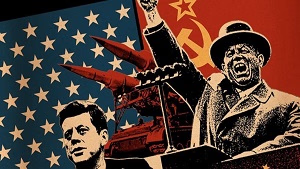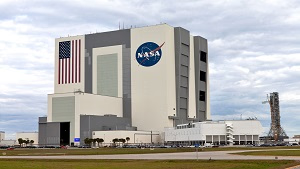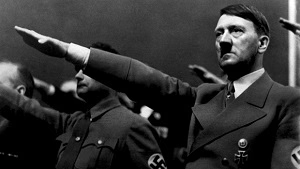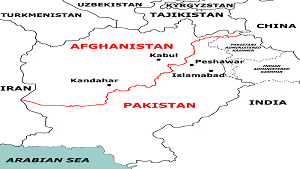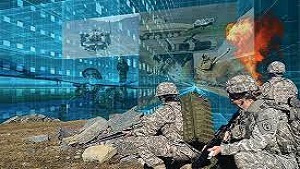Exploring the World War 1 - (WW1) major events and resulting devastation and legacy
Mar 21, 2024 | Socio | Political | Economy
By ibnsre
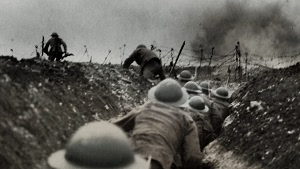 Exploring the World War 1 - (WW1) major events and resulting devastation and legacy
Exploring the World War 1 - (WW1) major events and resulting devastation and legacy
Key Points of World War 1 (WW1 or WWI)
- Definition and significance of World War I - Unprecedented Scale, Transformation of Warfare, Political and Social Consequences, Human Cost, Precursor to World War II
- Historical context leading up to the war - Imperialism, Militarism, Nationalism, Alliance System, Balkan Crisis, Diplomatic Failures, Assassination of Archduke Franz Ferdinand
- Causes of World War I - Militarism, Alliances, Imperialism, Nationalism
- Major Powers and Alliances - Allied Powers – France, United Kingdom, Russia, Central Powers- Germany, Austria-Hungary, Ottoman Empire
- Outbreak of War - Assassination of Archduke Franz Ferdinand, July Crisis and Diplomatic Tensions, Declarations of War
- Key Battles and Fronts - Western Front and East Front
- End of the War - Russian Revolution and Exit from the War, Entry of the United States, Collapse of the Central Powers, Armistice and Treaty of Versailles
- Consequences of World War I - Casualties and Human Cost, Seeds of Future Conflicts (e.g., Rise of Totalitarian Regimes)
- Legacy of World War I - League of Nations and Efforts at International Cooperation, Long-term Impact on Global Politics and Diplomacy, Lessons Learned and Unresolved Issues Leading to World War II
- Conclusion
1. Introduction
A. Definition and significance of World War I
World War I, often referred to as the Great War, was a global conflict that lasted from 1914 to 1918. It involved many of the world's great powers, divided into two main alliances: the Allies, primarily comprising France, Russia, and the United Kingdom, later joined by the United States and others; and the Central Powers, led by Germany, Austria-Hungary, and the Ottoman Empire.
The war was triggered by a complex web of political alliances, imperial ambitions, militarism, and nationalism, but its immediate cause was the assassination of Archduke Franz Ferdinand of Austria-Hungary in June 1914. This event ignited a chain reaction of declarations of war among European powers.
World War I was significant for several reasons:
- Unprecedented Scale: It was the first truly global conflict, involving nations from Europe, Asia, Africa, and the Americas. The scale of mobilization and the use of new technologies, such as machine guns, tanks, and chemical warfare, resulted in unprecedented casualties and destruction.
- Transformation of Warfare: World War I introduced new tactics and technologies that revolutionized warfare. Trench warfare became emblematic of the conflict, as soldiers dug elaborate networks of trenches to protect themselves from enemy fire. It also saw the first large-scale use of chemical weapons, such as mustard gas.
- Political and Social Consequences: The war led to significant political and social upheaval. It toppled empires (such as the Austro-Hungarian, Ottoman, German, and Russian empires) and redrew the map of Europe and the Middle East. The Russian Revolution of 1917, which led to the establishment of the Soviet Union, was deeply influenced by the strains of the war.
- Human Cost: World War I resulted in an immense human cost, with an estimated 16 million people killed and over 20 million wounded. The scale of suffering and loss left a deep scar on the collective psyche of the nations involved and reshaped attitudes towards war and peace.
- Precursor to World War II: The peace settlements that followed World War I, particularly the Treaty of Versailles, sowed the seeds of future conflicts. The harsh terms imposed on Germany contributed to economic hardship and political instability, paving the way for the rise of Adolf Hitler and the outbreak of World War II.
In summary, World War I was a watershed moment in modern history, marking the end of the old world order and setting the stage for the tumultuous events of the 20th century. Its impact on geopolitics, technology, and society continues to be felt to this day.
B. Historical context leading up to the war
The historical context leading up to World War I is complex and multifaceted, but several key factors contributed to the outbreak of the conflict:
- Imperialism: In the late 19th and early 20th centuries, European powers engaged in a scramble for colonies and territories around the world. This led to competition and rivalry between nations, particularly in Africa and Asia. Imperial ambitions fueled tensions and created a volatile international environment.
- Militarism: Many European countries, particularly Germany and France, engaged in an arms race, building up their military capabilities in anticipation of potential conflicts. This arms race heightened tensions and increased the likelihood of war.
- Nationalism: Nationalism was a powerful force in Europe during this period, with various ethnic groups seeking independence or greater autonomy. Nationalistic fervor contributed to the formation of alliances and fueled territorial disputes, particularly in the Balkans.
- Alliance System: The system of alliances that emerged in Europe further escalated tensions and turned local conflicts into potential flashpoints for a wider war. The two main alliance blocs were the Triple Entente (comprising France, Russia, and the United Kingdom) and the Triple Alliance (comprising Germany, Austria-Hungary, and Italy, though Italy later switched sides).
- Balkan Crisis: The Balkans, a region of southeastern Europe, was a powder keg of ethnic and nationalist tensions. The assassination of Archduke Franz Ferdinand of Austria-Hungary by a Serbian nationalist in June 1914 set off a chain of events that ultimately led to the outbreak of World War I.
- Diplomatic Failures: Despite the presence of diplomatic channels for conflict resolution, the major powers often failed to effectively manage crises and defuse tensions. Diplomatic miscalculations and misunderstandings further contributed to the descent into war.
- Assassination of Archduke Franz Ferdinand: The assassination of Archduke Franz Ferdinand, heir to the Austro-Hungarian throne, by a Bosnian Serb nationalist in Sarajevo on June 28, 1914, served as the immediate trigger for the war. Austria-Hungary's subsequent ultimatum to Serbia, supported by Germany, led to a chain reaction of declarations of war and the outbreak of hostilities.
These factors, among others, created a volatile and unstable international environment that eventually erupted into the catastrophic conflict of World War I.
2. Causes of World War I
The causes of World War I can indeed be summarized by the acronym "MAIN":
- Militarism: The buildup of military capabilities and the belief in the importance of military strength as a means of achieving national goals contributed to the escalation of tensions and the outbreak of war.
- Alliances: The system of alliances formed by European powers divided the continent into two opposing blocs, increasing the likelihood that a conflict involving one nation would draw in others through their mutual defense commitments.
- Imperialism: Competition for colonies and territories around the world fueled rivalries between European powers, contributing to tensions and conflicts that ultimately led to war.
- Nationalism: Nationalistic fervor and the desire for self-determination among various ethnic and nationalist groups created tensions within multiethnic empires and fueled territorial disputes, particularly in regions such as the Balkans.
Each of these factors played a significant role in creating the conditions that led to the outbreak of World War I.
3. Outbreak of War
The outbreak of World War I can be outlined through the following events:
- Assassination of Archduke Franz Ferdinand: The assassination of Archduke Franz Ferdinand, heir to the Austro-Hungarian throne, by a Bosnian Serb nationalist in Sarajevo on June 28, 1914, served as the immediate spark that ignited the conflict. This event prompted Austria-Hungary to issue an ultimatum to Serbia, setting off a chain reaction of diplomatic maneuvers and military mobilizations.
- July Crisis and Diplomatic Tensions: Following the assassination, a series of diplomatic exchanges and negotiations took place throughout July 1914. The July Crisis was characterized by intense diplomatic efforts to prevent a general European conflict. However, these efforts ultimately failed as alliances were invoked and mobilizations continued, leading to a state of heightened tension and the brink of war.
- Declarations of War: As diplomatic efforts faltered and military preparations reached their peak, declarations of war were issued by various nations. Austria-Hungary declared war on Serbia on July 28, 1914, and in the following days, the alliance system led to a cascade of declarations: Russia mobilized in support of Serbia, Germany declared war on Russia and France, and the United Kingdom declared war on Germany.
These events marked the formal beginning of World War I, as Europe plunged into a conflict that would engulf the continent and ultimately spread across the globe.
4. Major Powers and Alliances
Here's an overview of the major powers and their alliances during World War I:
Allied Powers:
- France: France was a key member of the Allied Powers and one of the major combatants in World War I. It had a longstanding rivalry with Germany and was determined to resist German aggression.
- United Kingdom: The United Kingdom, including England, Scotland, Wales, and Ireland, was a major global power and a central figure in the Allied Powers. It entered the war in defense of Belgium and to honor its alliances with France and Russia.
- Russia: Russia was initially part of the Allied Powers but withdrew from the war following the Russian Revolution in 1917, which led to the Bolshevik government signing the Treaty of Brest-Litovsk with the Central Powers in 1918.
- Others: Various other countries joined or supported the Allied Powers during the course of the war, including Italy (which initially was a member of the Central Powers but later switched sides), Japan, Serbia, Belgium, Greece, and later, the United States after 1917.
Central Powers:
- Germany: Germany was the leading power of the Central Powers and a key aggressor in the conflict. Its military strategies and ambitions, as well as its alliance system, were significant factors contributing to the outbreak of World War I.
- Austria-Hungary: The Austro-Hungarian Empire was a multinational empire that played a central role in the events leading up to the war, particularly in relation to the assassination of Archduke Franz Ferdinand. It was a key member of the Central Powers.
- Ottoman Empire: The Ottoman Empire, centered in present-day Turkey, joined the Central Powers in 1914. Its involvement in the war included the Gallipoli Campaign and other theaters in the Middle East.
- Others: Bulgaria joined the Central Powers in 1915, further bolstering their ranks.
These alliances and the conflicts between them formed the basis of World War I, shaping the course of the conflict and its aftermath.
5. Key Battles and Fronts
Here's an overview of some key battles and fronts during World War I:
Western Front:
- Battle of the Marne (1914): This battle marked the end of the German Schlieffen Plan, as French and British forces successfully halted the German advance towards Paris. It resulted in a strategic Allied victory and established the trench warfare stalemate that characterized much of the Western Front.
- Battle of Verdun (1916): Fought between French and German forces, the Battle of Verdun was one of the longest and most grueling battles of World War I. It lasted from February to December 1916 and resulted in enormous casualties on both sides.
- Battle of the Somme (1916): Launched by British and French forces, the Battle of the Somme aimed to relieve pressure on the French at Verdun. It became infamous for the massive casualties suffered by both sides on the first day of the battle, and it continued for several months, resulting in little significant territorial gain.
Eastern Front:
- Battle of Tannenberg (1914): This battle saw a decisive German victory over Russian forces in East Prussia. It was one of the first major engagements on the Eastern Front and severely weakened the Russian military.
- Brusilov Offensive (1916): Launched by the Russian Empire against the Austro-Hungarian Empire, the Brusilov Offensive was one of the most successful Russian offensives of the war. It resulted in significant territorial gains but also inflicted heavy casualties on both sides.
Other Theaters:
- Gallipoli Campaign (1915-1916): Initiated by Allied forces, primarily British and French, the Gallipoli Campaign aimed to secure a sea route to Russia by capturing the Gallipoli Peninsula in the Ottoman Empire. However, the campaign ended in failure and heavy losses for the Allies.
- Italian Front (1915-1918): Fought between Italy and the Austro-Hungarian Empire along the mountainous border between the two countries, the Italian Front saw a series of bloody battles, including the Battles of the Isonzo and the Battle of Caporetto. It was characterized by difficult terrain and high casualties.
These battles and fronts were just a few of the many theaters of conflict during World War I, each with its own strategic significance and human cost.
6. New Weapons and Tactics
During World War I, there were significant advancements in weapons and tactics that revolutionized warfare. Here are some key developments:
- Trench Warfare: Trench warfare became the dominant form of combat on the Western Front, characterized by elaborate networks of trenches dug by both sides for protection from enemy fire. It led to a stalemate and a war of attrition, with soldiers enduring harsh conditions and suffering from diseases like trench foot.
- Poison Gas: Chemical weapons, including chlorine, phosgene, and mustard gas, were used extensively during World War I. They inflicted horrific casualties and introduced a new level of terror to the battlefield. Gas attacks led to the development of gas masks and protective gear.
- Tanks: Tanks were introduced during World War I as a means of overcoming the stalemate of trench warfare. They provided mobile firepower and protection for infantry, although early models were unreliable and prone to mechanical failures.
- Airplanes: Airplanes were used for reconnaissance and aerial combat during World War I. They played a significant role in gathering intelligence and engaging in dogfights with enemy aircraft. The development of air warfare led to the establishment of dedicated air forces.
- Submarines (U-boats): Submarines, particularly German U-boats, were used for naval warfare and commerce raiding. They targeted enemy ships, including merchant vessels, and played a key role in disrupting supply lines and naval operations. The use of unrestricted submarine warfare by Germany contributed to the United States' entry into the war.
These new weapons and tactics transformed the nature of warfare during World War I, leading to high casualties and widespread destruction. They also influenced military strategies and laid the groundwork for future developments in warfare.
7. Home Fronts and Societal Impact
During World War I, the conflict extended far beyond the battlefield, profoundly impacting societies on the home front. Here are some key aspects of the societal impact of the war:
- Total War and Mobilization of Economies: World War I saw the mobilization of entire societies for the war effort. Governments implemented measures to centrally control economies, directing resources towards the production of war materials and rationing essential goods for civilians. This total war approach involved the conscription of men into the military, and women often took on new roles in the workforce to support the war effort.
- Propaganda and Censorship: Governments used propaganda to shape public opinion and maintain morale on the home front. Propaganda posters, films, and newspapers were employed to promote patriotism, demonize the enemy, and encourage support for the war. Censorship laws were also implemented to control the flow of information and suppress dissenting voices.
- Role of Women in the Workforce: With millions of men serving in the military, women played an essential role in filling labor shortages on the home front. They took on jobs traditionally held by men in factories, farms, and other industries, contributing significantly to the war effort. This shift challenged traditional gender roles and paved the way for greater gender equality in the years following the war.
- War Weariness and Social Unrest: As the war dragged on and casualties mounted, societies experienced war weariness and social unrest. Economic hardship, food shortages, and the loss of loved ones took a heavy toll on morale. Anti-war sentiment and protests against government policies grew in many countries, leading to strikes, demonstrations, and political upheaval.
Overall, World War I had a profound and lasting impact on societies around the world. It brought about significant social changes, challenged traditional norms, and reshaped political and economic systems. The scars of the conflict, both physical and psychological, would linger long after the guns fell silent.
8. End of the War
The end of World War I was marked by several significant events and developments:
- Russian Revolution and Exit from the War: The Russian Revolution of 1917 led to the overthrow of the Tsarist regime and the establishment of a Bolshevik government under Vladimir Lenin. In March 1918, the new Bolshevik government signed the Treaty of Brest-Litovsk with the Central Powers, effectively ending Russia's involvement in the war and ceding significant territory to Germany and its allies.
- Entry of the United States: The United States entered World War I in April 1917, following the German resumption of unrestricted submarine warfare and the revelation of the Zimmermann Telegram. American troops began arriving in Europe in large numbers, bolstering the Allied war effort and providing fresh manpower and resources.
- Collapse of the Central Powers: By late 1918, the Central Powers were facing internal unrest, military setbacks, and economic hardship. The entry of the United States into the war and the exhaustion of Germany and its allies contributed to their collapse. Bulgaria was the first to surrender in September 1918, followed by the Ottoman Empire in October and Austria-Hungary in November.
- Armistice and Treaty of Versailles: On November 11, 1918, an armistice agreement was signed between the Allies and Germany, bringing an end to the fighting on the Western Front. The armistice took effect at the 11th hour of the 11th day of the 11th month. Negotiations for a formal peace settlement began at the Paris Peace Conference in January 1919, culminating in the signing of the Treaty of Versailles in June 1919. The treaty imposed harsh terms on Germany, including territorial losses, military restrictions, and reparations payments, setting the stage for the post-war period and laying the groundwork for future conflicts.
These events marked the end of World War I, but the consequences of the conflict would reverberate for years to come, shaping the course of the 20th century.
9. Consequences of World War I
The consequences of World War I were far-reaching and multifaceted, impacting nearly every aspect of global society. Here are some key consequences:
- Casualties and Human Cost: World War I resulted in unprecedented levels of death and destruction. An estimated 16 million people, both military and civilian, lost their lives, and millions more were wounded or left with lifelong disabilities. The war left behind a generation scarred by trauma and loss, with profound social and psychological repercussions.
- Redrawing of Borders and Creation of New Nations: The Treaty of Versailles and other peace treaties that followed World War I led to significant territorial changes and the redrawing of borders in Europe and the Middle East. The collapse of empires such as the Austro-Hungarian, Ottoman, German, and Russian Empires resulted in the creation of new nations and the reconfiguration of existing ones, contributing to geopolitical instability and ethnic tensions.
- Economic Repercussions and Post-war Depression: World War I had a profound impact on the global economy, leading to widespread destruction of infrastructure, disruption of trade, and massive debt burdens for many nations. The post-war period was characterized by economic instability and inflation, with many countries experiencing recession and unemployment. The war also laid the groundwork for the Great Depression of the 1930s.
- Seeds of Future Conflicts (e.g., Rise of Totalitarian Regimes): The aftermath of World War I set the stage for future conflicts and political upheaval. The harsh terms imposed on Germany by the Treaty of Versailles, including territorial losses, military restrictions, and reparations payments, fueled resentment and contributed to economic hardship in Germany. This environment created fertile ground for the rise of totalitarian regimes such as Adolf Hitler's Nazi Party in Germany and Benito Mussolini's Fascist regime in Italy. Additionally, unresolved territorial disputes and ethnic tensions in regions such as the Balkans and the Middle East continued to simmer, laying the groundwork for future conflicts such as World War II and the collapse of the Ottoman Empire.
These consequences underscore the profound and lasting impact of World War I on the course of 20th-century history, shaping the geopolitical landscape and the trajectory of global events for decades to come.
10. Legacy of World War I
The legacy of World War I had profound and lasting effects on the world. Here are some key aspects of its legacy:
- League of Nations and Efforts at International Cooperation: The League of Nations was established in 1920 as a result of the Paris Peace Conference and the Treaty of Versailles. It was the first international organization dedicated to maintaining peace and promoting cooperation among nations. Although the League ultimately failed to prevent the outbreak of World War II, it laid the groundwork for later efforts at international cooperation, such as the United Nations.
- Long-term Impact on Global Politics and Diplomacy: World War I fundamentally reshaped the global political landscape. It marked the end of several major empires, including the Austro-Hungarian, Ottoman, German, and Russian Empires, and led to the emergence of new nation-states. The war also altered the balance of power in Europe and set the stage for the rise of the United States and the Soviet Union as superpowers in the 20th century.
- Lessons Learned and Unresolved Issues Leading to World War II: World War I left a legacy of lessons learned and unresolved issues that contributed to the outbreak of World War II. The harsh terms imposed on Germany by the Treaty of Versailles, including territorial losses, military restrictions, and reparations payments, fueled resentment and economic hardship, laying the groundwork for the rise of totalitarian regimes and the aggression that led to World War II. Additionally, unresolved territorial disputes and ethnic tensions in regions such as the Balkans and the Middle East continued to simmer, contributing to geopolitical instability and conflict in the interwar period.
Overall, the legacy of World War I continues to shape global politics, diplomacy, and international relations to this day, serving as a cautionary tale of the consequences of war and the importance of cooperation and diplomacy in maintaining peace and stability.
